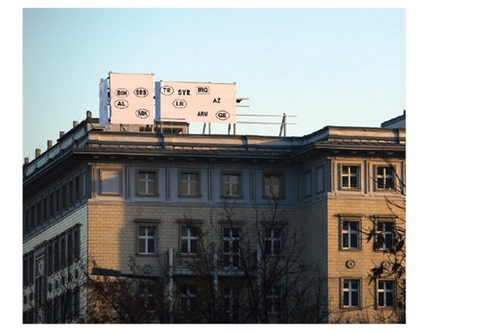BERLIN
East Coast Europe was a project about the perceptions of contemporary European identity and its relation to spatial practices and international politics. The title “East Coast Europe” is a word play. While “Europe” is the central topic for investigation, its contemporary culture, expansion, and its status as a continuing social project, “East Coast” refers to two distinct edges of Europe, both real and imaginary—the geographical East Coast of the United States of America and the political “East Coast” of the European Union.
The project invited leading figures in culture and politics from the two east coasts—of the United States of America, and of the countries in the European Union and its vicinity to comment on their perception of Europe today. These conversations manifested into a series of interviews, a design project, and a book.
ECE looked into the urgent details of a dense network of contemporary experience of the European Union’s extensive exchange of knowledge, people, and goods with the East Coast of the United States and also with its own eastern border. These two crisp north-south borderlines belie many geographic spatial complexities including the islands of Switzerland and the Western Balkans that now reside within the land mass of Europe but also outside of the European Union. ECE investigated the cultural and political confluence between these two north-south borderlines, one geographic and one political. It asked: What is this new transverse region through multiple time zones? What are its challenges and possibilities for social, political and spatial practices? What is the future of international cultural practices in light of the expansion of the European Union? What are the changing prospects for intercultural collaboration between the players within the single entity of the European Union? What are the new emerging roles for cultural practices beyond European boundaries, like the East Coast of the United States and the “East Coast” of Europe towards Russia, the Middle East and Asia? What is the future of the cultural representation of European boundaries? And what are cultural practices currently learning from this geopolitical expansion?
As a preface to the main project staged in New York during May 2006, a set of designed billboards facing Berlin’s Karl Marx Allee inscribed an imagined borderline of "East Coast Europe".
The first manifestation of this installation coincided with the book launch of The Violence of Participation. Published by Sternberg Press, Berlin & New York Co-published by Zalozba ZRC, Ljubljana.
With contributions by Can Altay, Marina Abramovic, Paddy Ashdown, Zdenka Badovinac, Katherine Carl, Eda Cufer, Reinier de Graaf, Mladen Dolar, Lisa Farjam, Srdjan Jovanovic Weiss, Carin Kuoni, Zak Kyes, Jacques Le Goff, Aaron Levy, Genevieve Maitland Hudson with Cyril Blanc, Markus Miessen, Viktor Misiano, Miran Mohar, Shamim Momin, Hans Ulrich Obrist, Orchard, Dan Perjovschi, Marjetica Potrc, Nebojsa Seric Shoba, Michael Shamiyeh, Erzen Shkololli, Taryn Simon, Nedko Solakov, Alenka Suhadolnik, Milica Tomic, Kazys Varnelis, Felix Vogel, Borut Vogelnik, Jordan Wolfson, and Sislej Xhafa.
East Coast Europe was commissioned and produced by the Consulate General of Republic of Slovenia in New York City during Slovenia’s Presidency of the Council of the EU in 2008, with support of the EUNIC Network New York and Delegation of the European Commission, New York.
The ECE project was conceived by Katherine Carl, Srdjan Jovanovic Weiss, Markus Miessen and Alenka Suhadolnik.
